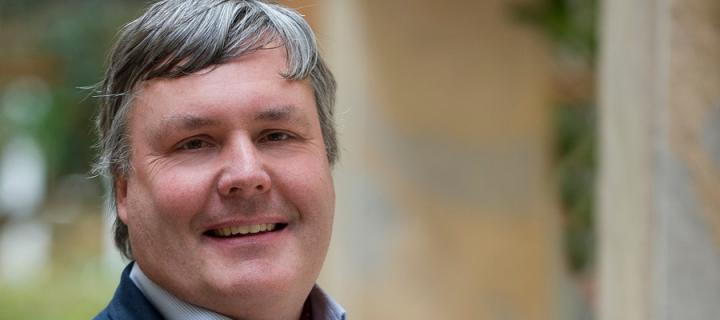Prof Jamie Davies
EUSA teaching award winner Jamie Davies questions how complex biological form develops from simple beginnings.
What are you currently working on?

Far too many things at once, as usual… The developmental biology side of my lab is working on how kidneys develop in foetal life, using culture systems that avoid the need for animal experimentation. Information from this feeds into the tissue engineering team, who are working on making ever more realistic kidneys from human stem cells.
Then there is the synthetic biology team, who are building genetic modules that confer on naïve cells the ability to make multicellular patterns, like the patterns on animal coats, and to make structures or move in specific ways. We hope that this will lead, one day, to an ability to program cells to make ‘designer tissues’.
Finally, my lab hosts bioinformatics teams who maintain two major databases; 'Guide to Pharmacology', the international database for UNECSO’s International Union of Basic and Clinical Pharmacology and for the British Pharmacological Society; and GUDMAP, a database for urogenital development for the US National Institutes of Health. And I do some practical, local research into methods of teaching medicine and biomedical sciences.
What do you hope will come out of you research?
In practical medical terms, I hope that our research will contribute to a future in which new organs can be made ‘to order’ from stem cells.
Although we are still a long way from being able to build organs for transplantation, we have already reached the stage at which we are exploring the possibility that small engineered human kidneys can be used to screen possible drugs and poisons, reducing or replacing the need for animal experiments and producing data much more realistic for human responses.
The synthetic biology work is further from immediate application but we hope that our research will lay the foundations for producing complex tissues that go beyond what has evolved; these may be useful for repair of bodies that are very damaged or abnormal.
How did you get here?

My overall, long-term interest is in how the simple becomes complex; how something as elementary as an egg can turn into something as sophisticated as a human being. Using developing kidneys to explore how complexity is gained allowed me work to have practical application, and also allowed me to work in culture, with no need to experiment on living animals (finding alternatives to animal experiments has always been an interest of mine).
I have always had an interest in engineering, as well as in science, and the rise of synthetic biology in the early 21st century allowed me to blend these two interests in a way that is great fun and will also, hopefully, be productive.
The bioinformatics interest grew out of the simple fact that I do not have a good memory for details: I started an amateurish database of kidney development in the early 1990s, just for myself originally but others started to request access so I put it on the (then very new) web and it became a widely used resource.
NIH then funded us to help create a much more professional version. The pharmacology database was started by my late, much missed colleague Tony Harmar, who asked me to take over from him when he became seriously ill, on the grounds that I seemed to know something about databases even if I knew next to nothing about drugs. I have been supported really well in this by a great team of proper pharmacologists who are very patient when I ask elementary questions about their science.
With whom are you collaborating?
I collaborate very widely (I have to! I know a little about many things, but not much about any specific thing and have always valued the deep expertise of others).
One long-term and very fruitful collaboration has been with Peter Hohenstein, whom I first knew as Nick Hastie’s post-doc but who is now leading a very effective laboratory of his own which is fast gaining an international reputation for excellence. Peter is an amazing molecular biologist and the combination of his solid genetic engineering and my embryological micro-manipulation and theoretical hand-waving has served us both well for many years. I hope it will continue to do so.
Tell us something about you that might surprise us.
My once ‘secret life’ as a choreographer and teacher of jazz dance is probably too well known by now to surprise anyone. So how about this as a true (but misleading) fact? I have, for the last 25 years, owned a ship that appears ahead of even the Royal Yacht Britannia on the UK’s National Register of Historic Ships.
Tempting as it is to stop speaking there, leaving everyone with images of tall masts and billowing sails, I should probably confess that The Saucy Mrs Flobster is actually a 72 year-old canal boat that was registered as a ‘ship’ only because of over-enthusiastic wartime bureaucracy. The fact that I bought her years before I bought either a car or a house reveals far more than is wise about my mature sense of life’s priorities…

